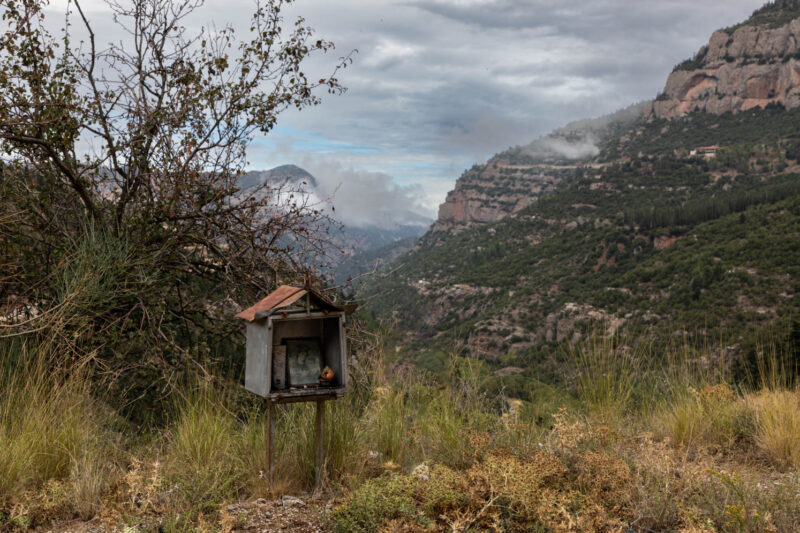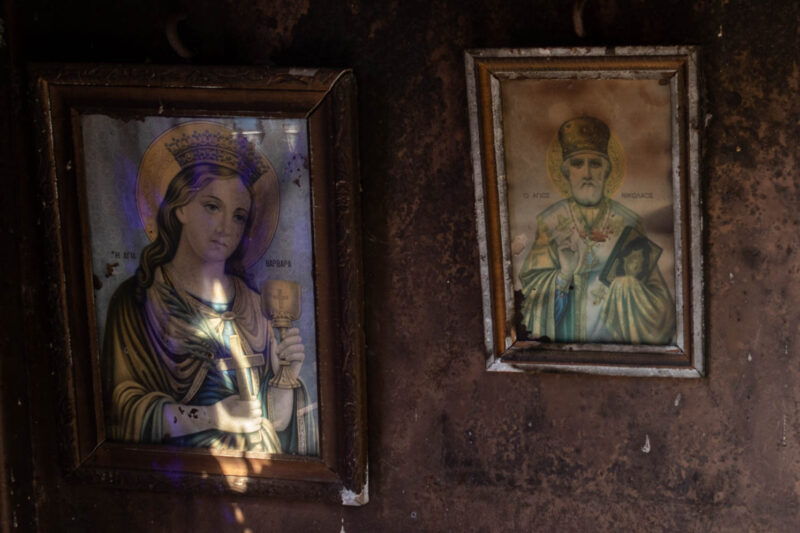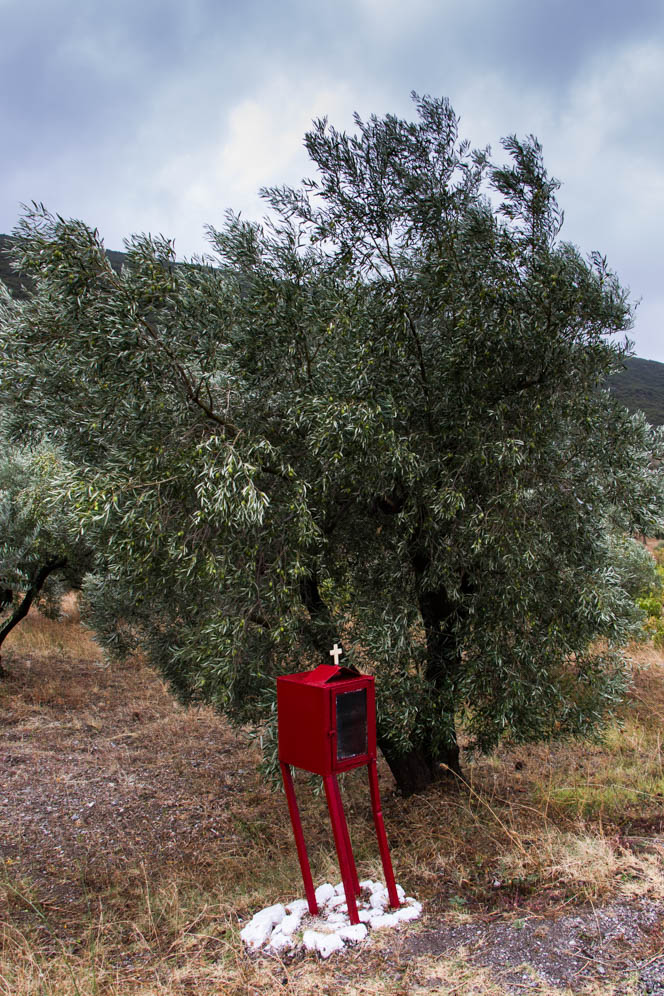Sacred little houses of Greece
Stories
Sacred little houses of Greece
Capturing kandilakia
From the time that we lived in Greece Yvonne has been interested in the sacred little houses of Greece.
The verges of the Greek roads are full of them. They come in all shapes and sizes, most of them are made of concrete or iron, you have large and small, coarsely built and elegant, old and new. We are talking about kandilakia or proskynitaria, or as the vernacular also calls them ikonnísmata or ekklisákia, ‘devotion houses’ or ‘road churches’. We don’t really know the difference, often we call them kandilakia.
Unfortunately, we only have a few pictures of kandilakia from the period when we lived in Greece. However, on our camper trips in Greece in 2017 and 2021, Yvonne could no longer drive past them. If there was a beautiful or special kandilakia along the road, we stopped, or if we had already passed it, we returned and drove back to capture it on the sensitive plate
Our photo series
We have now built up a nice collection of photos of sacred houses. Yvonne took most of the pictures. The collection is expanded every time we travel in Greece. A dynamic collection. We have made a small selection of our collection for this post. If you want to see the whole series please visit our photo site on SmugMug (click).
The story behind
Below some more information about the sacred houses. It is based on an article in the Lychnari in 2004 by Wim Oudshoorn with the title “Buitenhuisjes van de heiligen” (Country houses of the saints). There is also a DVD released by Barbara Meter and Wim Oudshoorn in 2007, with the title “Whether or not you believe…”.
Greece is not the only country in Europe where sacred houses stand along the road, but it is the only country with such a high density and variety. Each region has its own type and the only country where these expressions of faith are still so alive.
In a general sense, you can say that these religious structures mark a place of doom. At this point of the road, whether someone has died or has survived, it is almost always related to a traffic accident. In this respect, the ikonnísmata also have a warning function, although at the same time you can see, on the basis of the large number of sacred houses, that these warnings are often ignored.
Appearance
But there are more types of proskynitaria than those that try to keep alive the memory of a family member who died in traffic or that recall a rescue. However due to the large number of traffic accidents on Greek roads, it is it is a large category. Usually, they are not very solid and, in their appearance, often downright kitschy. In the past most sacred houses were self-made, now they are sold in many places, and it is almost a mass product.
Much older and more beautiful are the proskynitaria that indicate the place where a church or monastery once stood, or that point the way to an important religious place. Built into entrance gates, a garden wall or on top of a spring we find the proskynitaria that ensure the protection of house, garden, and water, also in this species are often beautiful specimens.
In addition, there is a whole range of individual applications, some of which are not appreciated in the same way by the faithful. But no matter how different the various types may be, they all have an ikonothésio, a space that can be locked with a door, in which at least one icon is placed, hence the name ikónisma for the entire proskynitari. In the event of a fatal accident, you will usually also find a photo of the victim in between the icons. It is mainly young people who died in traffic. Usually, one can see from the degree of maintenance of the proskynitari how fresh the suffering or how intimate the gratitude is. But no matter how neglected some of them look at some point, without a cross, icon or oil lamp, door gone, glass broken, no one will ever dare to remove them. Even during road works, the proskynitaria are spared, or they are put back when the work is done, or they are given a new place.
Saints
In honor of the saints or the soul of the dead, kandylia, oil lamps are burning in these mini churches. There is always a bottle of oil at your fingertips, with a box of matches and a box of fuses (louminia). Many Greeks firmly believe in saints. This is also the reason for the popularity of the proskynitaria, they bring the saints closer to the people. How reassuring it is to see the kandyli burning at night. The light shines in the night, so that it is not too dark for the saints, and the people can see the saints. The best hour to refill the oil lamps is therefore just before sunset, so that the flame comes through the night and can keep the demons at bay.
Some sacred houses are true pearls of folk art.
Photo locations
Comments are closed.



















